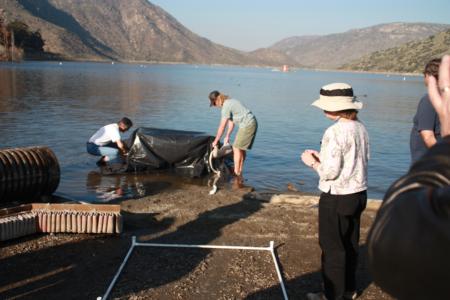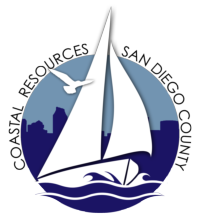Quagga/Zebra Mussel Invasion
For information on aquatic invasive species on coastal boats and harbors, please visit our page Aquatic Invasive Species (Coastal).
UC ANR has posted a Spanish language blog with a YouTube video on the problem with quagga mussels and what boaters can do. Read it and link to the video at
- Mejillones invasores amenazan reservas acuáticas de California Noticia con guión
NEW! Quagga and Zebra Mussel Eradication and Control Tactics Technical Report (Updated July 2013)
Higher resolution photos version
Lower resolution photos version
This practical and well-researched 36-page report explains how to use an Integrated Pest Management (IPM) approach and specific tactics for eradicating and/or controlling invasive dreissenid (quagga and zebra) mussels in lakes and reservoirs. It covers how to develop and get started on a management strategy, manual & mechanical removal, oxygen deprivation, chemical application, emerging technologies, and an overview of permitting and regulatory processes. The report includes photos and diagrams, successful examples of eradication and control efforts that have used each of the tactics, and extensive weblinks to resources for more information. It is based in part on presentations by experts at a joint workshop presented by California Sea Grant Extension and University of California Cooperative Extension in San Diego on February 1-2, 2012.
Speakers’ abstracts, other information from the workshop presentations and field trips, and individual information sheets on the topics noted above are available from:
http://ca-sgep.ucsd.edu/quaggazebra_mussel_control

Demonstrating Tarpaulin Deployment for Invasive Mussel Control. Photo by Leigh Johnson
Quagga and Zebra Mussels (freshwater)
The invasive quagga mussel has been found in several southern California lakes and reservoirs, according to the California Department of Fish and Wildlife. Quagga mussels currently are spreading via southern California aqueducts. Its cousin, the zebra mussel, is a major invasive pest in freshwater areas of U.S. eastern and midwestern states and is under control in one California lake.
Both feed voraciously on microscopic aquatic life (plankton) and can deplete food supplies for California's native aquatic life. Adult mussels build up in layers on surfaces where each new generation settles upon the previous one. As a result, they can clog water lines up to two feet in diameter.
Both are easily spread by boats moving from one waterway to another. They can survive as adults or larvae in small amounts of water within the boat.
For information on how you can help to prevent the spread of quagga and zebra mussels and to learn more about them, visit:
- California Department of Fish and Wildlife Invasive Species
- Reporting Invasive Species to California Department of Fish and Wildlife
- CDFW Map of Quagga and Zebra Mussel Sightings in California
CDFW conducts front-line programs to prevent invasive mussels from being spread by boats among California's lakes and reservoirs. They offer extensive programs for water managers and volunteer groups and is training "mussel dogs" to help detect mussels on boats. Report invasive species to CDFW.
Links to several California agencies involved in managing invasive mussels
Excellent educational video-documentary Don't Move a Mussel and training on how to inspect boats for mussels and steam-clean to kill them. Available for free from Pacific States Marine Fisheries Commission.
- California Division of Boating and Waterways Publications
- Scroll down to Aquatic Invasive Species for publications on preventing transportation of invasive mussels and water-weeds by boats.
Excellent source of information on zebra and quagga mussel control programs in the eastern and midwestern United States and Canada.
National network of regional "panels" through which states and universities collaborate on management, research and outreach to control aquatic invasive species of all types.
Additional Resources:
- NOAA Fisheries Programs to control the green seaweed, Caulerpa taxifolia, that invaded two southern California waterways, Huntington Harbor and Aqua Hedionda Lagoon.
- RIDNIS Reducing the Introduction and Damage of Aquatic Nonindigenous Species through Outreach and Education


